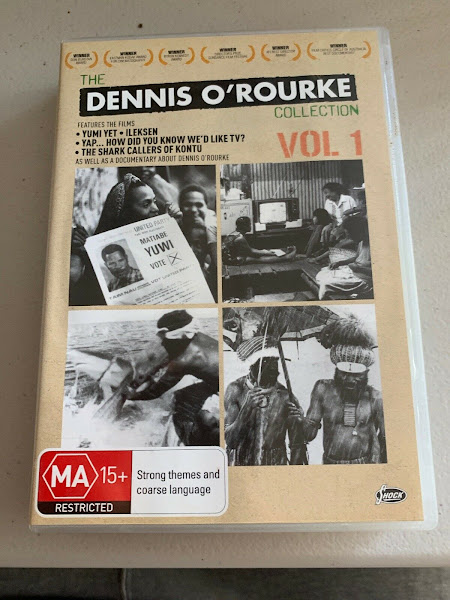The Marquis de Rays' Expedition is known by name to practically everyone who has wandered in the Pacific; but very few knew the actual complete story, with its attendant tragedies of fraud, disillusionment and death.
It is generally known that the Marquis, by highly-coloured promises, induced a large number of people to go to a "new colony" on the southern shore of New Ireland, and that many of them died there, in that hopeless, fever-ridden hole; but a detailed account of the enterprise has not previously been published.
We should therefore be grateful to Mademoiselle J.J Niau for writing "The Phantom Paradise", which is not only a most readable book but also a valuable addition to available records. Alas, it has long been out of print, and is only available at selected libraries - click here.

One is surprised at the extent of the fraud - for there seems little doubt that it was simply a gigantic "racket". One gets the impression, from this carefully-compiled, well-documented book, that the Marquis did not launch his scheme with fraudulent intent. A member of an ancient aristocratic family of Breton, he was a dreamer, a wanderer and a visionary. France was rent by political troubles. He made a plan - as many another patriot has done - for establishing, overseas, a new, free home for his oppressed countrymen. But, instead of going personally to see the home of La Nouvelle France, he took the word of one Duperry, commander of the "Coquille", who had landed on August 12, 1823, at Port Praslin, on the southern extremity of New Ireland. Dupeery described this place as a Pacific Paradise; and De Rays, who had half the Pacific open to his selection, by a most unlucky chance chose this as the location of his new settlement.
De Rays threw himself with great energy into the work of organisation. His first advertisement, offering land at two francs an acre, with "rapid and assured fortune", appeared in Le Petit Journal on July 26, 1877; and, within the next two or three years, people in France, Italy, Belgium and Spain almost fell over each other in their eagerness to join the expedition and pay the Marquis liberally for the privilege. The progress of the enterprise may be seen from the dates of the sailing of the four vessels which carried the poor, deluded colonists,to the number of nearly 1000, to Port Breton (as it was christened):
Chandernagore, left Holland September 14, 1879.
Genil, left Barcelona July 9, 1880.
Nouvelle Bretagne, left Barcelona April 7, 1881.
Clipping from the Mount Alexander Mail, Vic., of 19 March 1880
No ship sailed out of France. The French authorities were suspicious of the Marquis from the first, and did their utmost to dissuade people from joining him, and refused clearance to his ships. He defied them, and despatched his ships from other countries. He may have sent away the Chandernagore in good faith - he was dreamer enough - but he knew, before the Genil left in March, 1880, that Port Breton was totally unsuitable for any colonising enterprise. He made no effort to delay the sailing of other ships, or to seek other territory for colonisation. Instead, his lieutenants drove the colonists ashore in the rain-soaked, fever-stricken place, and some even went to extreme length to prevent the wretched people escaping to a more hospitable country. One commander, Captain Henry, refused to put his quota of colonists ashore in New Ireland, and tried to find a home for them elsewhere; but the others seem to have ben rascals in the pay of De Rays, and their chief object was to maroon the poor, deluded people and prevent their getting back to civilisation with their damning tale of deceit and cruelty. Altogether, a thousand people were brought out in those ships, to the great enrichment of the Marquis.
Clipping from Maryborough Chronicle, Qld., of 29 April 1882
The detailed story is a most tragic one - it is hard to believe that the people could have lived through such misery. As a matter of fact, only a proportion of them lived - the graves of the others line the shore of Port Breton and Liki-Liki (another place just around the corner on the south-east coast, to which some of them moved).
The only bright spots in the story are furnished by the heroism of Dr Baudouin, who stayed with the colonists and fought for them against the Marquis and his gang; and by the hospitality of the missionaries (Rev. Brown and Rev. Benjamin Danks) and traders (Mr and Mrs Farrell) in the Duke of York Islands. Mrs Farrell, presumably, is the lady who was the daughter of Mr Coe, consul in Samoa. She ran away to the Western Pacific with Mr Farrell, who was very successful as a trader, and subsequently became known throughout the South Seas as "Queen Emma".
In time, the settlers either died or got away to Australia, the Philippines, Europe, or some other Pacific island; and, in a few years only a few sticks and stones, many unmarked graves and some cruel memories were all that remained of La Nouvelle France.
Even as a romance, "The Phantom of Paradise" would be an amazing story. Yet it is true - a tragic bit of the strange chequerboard of Pacific history, more recently invoked by the following article in THE BULLETIN of August 1982:
For a scholarly dissertation of this colossal real estate fraud, click here.
Further reading:
1) Three articles by J.H. Niau in THE SUN, three years before her book:
Part I, April 23, 1933,
Part II, April 30, 1933,
Part III, May 7, 1933.
2) "The South Sea Bubble of Charles du Breil" by Louis Becke - click here
3) "Charles I, Emperor of Oceania" by James A Michener - click here
4) "The Marquis provided the mill-stone", PIM, February 1949 - click here
5) It inspired Daudet's burlesque "Port Tarascon" - click here



































